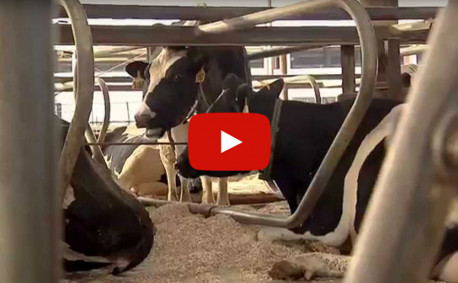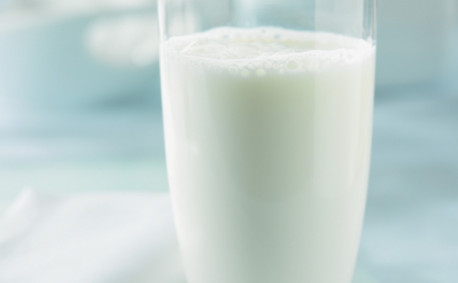Making Sense of the Dairy Aisle: From Dairy Milk to Pea Milk
Between classic dairy milks and all the plant-based options on the market today, it’s difficult to keep track of the differences. If you’ve ever wondered what goes into these products — from nutritional benefits to resource consumption and carbon footprint — you’ve come to the right place!
Dairy Milk
When it comes to nutritional value, it’s hard to beat the affordable classic. A rich source of protein (eight times more per serving than most plant-based milks), calcium, potassium and vitamins A, B12 and D, dairy milk has earned its spot as a nutritious staple in our daily diet.
The dairy industry is taking meaningful steps toward a more sustainable future. To address concerns about cows and their manure as a source of methane, the Innovation Center for U.S. Dairy announced plans to reach greenhouse gas neutrality for the entire industry by 2050. The dairy industry is also investing in more sustainable resource management, including upcycling waste from other industries for cattle feed and converting cow manure into concentrated fertilizer.
Almond Milk
Because almond trees absorb and store carbon from the atmosphere, almond milk production has one of the lowest greenhouse gas emissions per unit of any milk variety. Despite requiring more water to grow than any other plant-based milk (around three gallons per California almond), almond production is on track to become carbon-neutral — and maybe even carbon-negative — thanks to the use of almond co-products for renewable energy sources and animal feed.
Almond milk lacks the protein and potassium of dairy milk, but it’s a good source of vitamin E — an antioxidant that protects your body from free radicals — and omega-3 fatty acids, which lower LDL (bad) cholesterol. Almond milk is low in carbohydrates and doesn’t contain cholesterol or saturated fat, which can be helpful for people with diabetes.
Soymilk
With nine grams of protein in every eight-ounce serving, soymilk packs a protein punch compared with its other plant-based counterparts. A rich source of soy isoflavones and polyunsaturated fats, soymilk increases bone calcium content to preserve strong bones and protects against cardiovascular disease by lowering total LDL cholesterol. Soy also contains a high amount of the amino acid leucine, which helps build lean muscle.
In addition to needing only one-tenth of the water that almonds do, soy’s greenhouse gas emissions are some of the lowest per unit alongside almond milk and oat milk. Soybeans also convert nitrogen in the atmosphere into compounds that plants and animals can use, a beneficial process known as nitrogen fixation.
Oat Milk
Oat milk — like soymilk and almond milk — has one of the lowest levels of greenhouse gas emissions (only 0.9 kg per liter of oat milk) and uses significantly less fresh water than almond milk — just below 13 percent of the total used in almond milk production.
Despite having less protein and more carbohydrates than dairy milk, oat milk is a great source of fiber, including beta-glucan, which decreases LDL cholesterol. Oat milk also stands out, as it does not contain any of the top eight allergens listed by the Food and Drug Administration — dairy, eggs, fish, shellfish, tree nuts, peanuts, wheat and soybeans — making it a widely accessible choice for those with food allergies.
Pea Milk
Entering the scene in 2015, pea milk was created to compete with other plant-based milks in terms of nutrition, taste and sustainability. Like soy, the yellow split peas used to make pea milk contribute to nitrogen fixation, and the production of pea milk uses six times less water than almond milk.
Pea milk is packed with eight grams of protein per cup (the same as dairy milk), and despite its less-than-appetizing name, its creators invented a process to isolate the protein molecule from the pea to ensure the beverage tastes more like milk and less like pea.
Navigating seemingly endless milk options can be overwhelming. We haven’t even scratched the surface of all the plant-based milks out there (Our sincerest apologies to fans of rice, quinoa, macadamia, cashew, peanut, hazelnut, walnut, coconut, flax, chia, tiger nut, hemp and potato milks!). But with such variety comes the opportunity to meet your unique lifestyle and nutritional needs. Now that you know more about what options await you, we hope you enjoy exploring all the dairy aisle has to offer!
More About Milk





